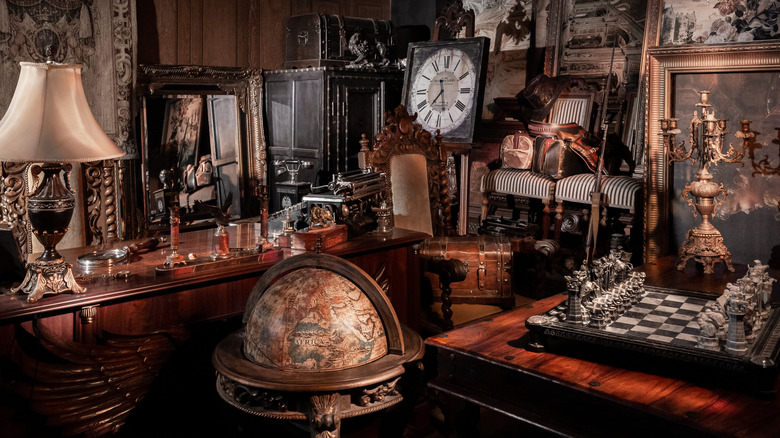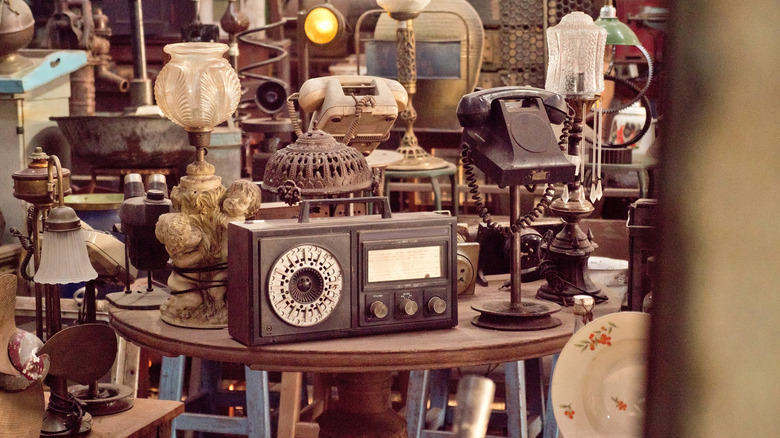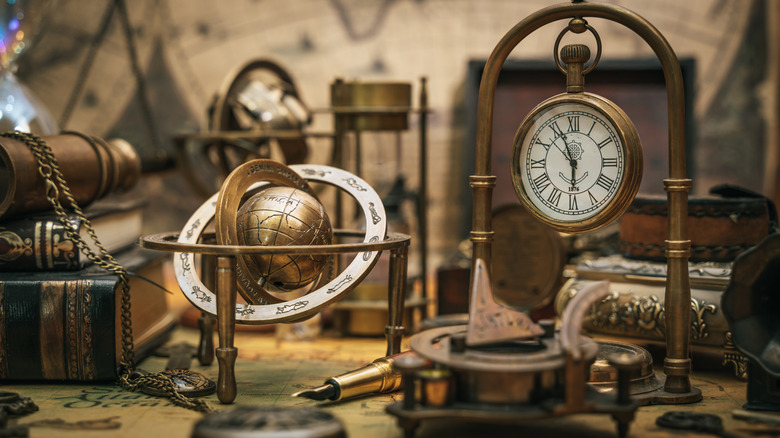What Makes Something An Antique Instead Of Just Old?
It's quite common for people to refer to an item as an antique when they see something old, but by definition, per Merriam-Webster, an antique is "a relic or object of ancient times." When you go to an antique store, you get to see countless items that are labeled antique, and if you're not an expert, you just have to trust someone else's judgment regarding an item's authenticity. Most antique dealers follow a rule to be able to say something is an antique — it must at least be 100 years old (via Antique HQ).
There is also the question of when to use the word "vintage" versus "antique". Both vintage and antique items are old, but the main difference is age. While antique refers to something at least 100 years old, labeling vintage items is more subjective, but most would agree that it has to be at least 40 years old. It's also common to attach the era where it came from when referring to something vintage, as these items typically have characteristics that represent that specific period in the past, according to Apartment Therapy.
The United States Tariff Act of 1930
In 1930, the Smoot-Hawley Tariff Act was signed into law, effectively increasing tax rates on thousands of imported goods. A paragraph on the new law also gave a definition to the word antique, which read, "artistic antiquities and objects of ornamental character of educational value which shall have been produced prior to the year 1830," (per Street Directory). This was where the 100-year-old rule came from. Given that definition, it's easier for people to distinguish whether objects are legitimate antiques.
Despite that, however, some antique dealers don't strictly follow the 100-year rule, and according to them, items that are at least 50 years old can be considered antiques, according to Antique HQ. This doesn't sit well with purists who argue that changing the definition lowers the standard of items. When purchasing antiques, it's important to go to a reputable source and have at least some basic information about an item's value and origin.
The label doesn't affect the value of an item
If an item is an antique, it doesn't necessarily mean that it is more expensive than a vintage item despite its older age (via Martha Stewart). There are different factors considered when appraising old items, and some of these include the condition of an item, who manufactured it, and its rarity, just to name a few. Some of the most coveted antiques include furniture, works of art, jewelry, and even postcards.
It's common for antiques to come in poor form because of age, and careful thought must be put into the restoration. Restoring an old item affects its value, so it is important to have an item restored by a professional, and doing so may increase the value of an antique. On the other hand, amateur repairs may negatively impact its value, and it may sometimes be best to leave an antique in its original condition, according to The Spruce Crafts.


